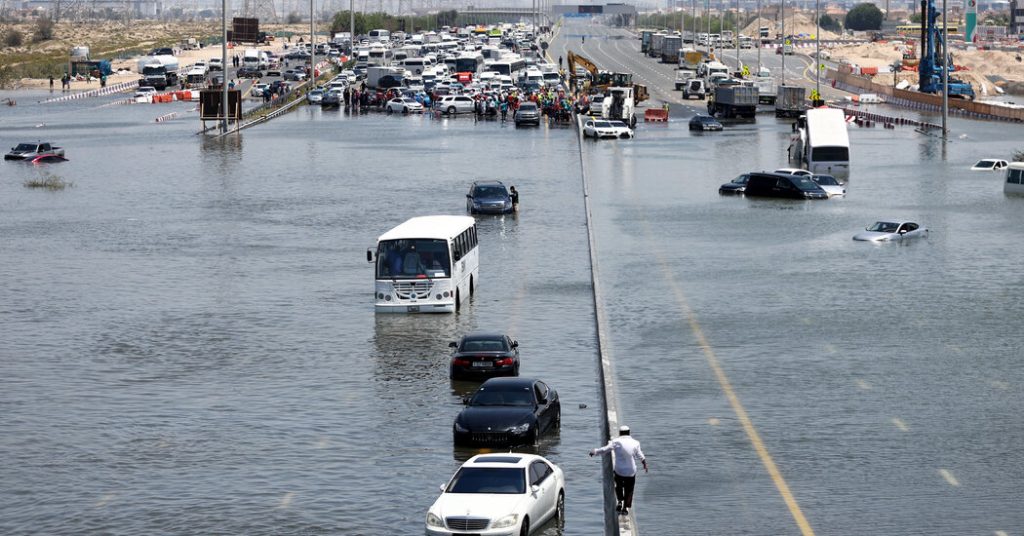Heavy rains in the United Arab Emirates and Oman have caused significant devastation in one of the driest regions on Earth. The storms submerged cars, clogged highways, and led to the death of at least 21 people. This event was not unexpected, as forecasters had issued warnings several days prior, but the intensity of the downpours was unusual. The Arabian Peninsula typically receives very little rainfall, with most of it coming in severe bursts rather than periodic showers.
The United Arab Emirates experienced its largest 24-hour rainfall total on record on Tuesday, according to officials. This event followed a previous round of thunderstorms in the country just last month. Oman, with its coastline on the Arabian Sea, is also susceptible to tropical cyclones, which have caused extensive damage in the past due to torrential rain, powerful winds, and mudslides. It is important to note that global warming is projected to intensify downpours, resulting in stronger storms across the globe.
climate change impacts rainfall patterns worldwide, including in the Arabian Peninsula, where extreme downpours are likely to become more intense and frequent with worsening global warming. While the role of cloud seeding in influencing these storms is unclear, countries like the U.A.E. have been attempting to increase rainfall through this method for decades. Cloud seeding has been shown to modestly affect precipitation in some cases, but its impact on the recent storms in the region would require further study.
Cities in arid regions are not typically designed to handle heavy rainfall and flooding. Paved surfaces prevent water from seeping into the ground, leading to overwhelmed drainage systems and increased vulnerability to flooding. A recent study of Sharjah, the capital of an emirate in the U.A.E., highlighted the city’s susceptibility to flooding due to rapid growth in recent decades. Overall, flooding in dry places like the U.A.E. and Oman is a complex issue that involves not only the amount of rainfall but also the ability of cities to manage excess water effectively.
The recent floods in the United Arab Emirates and Oman serve as a stark reminder of the challenges posed by extreme weather events in typically dry regions. While climate change is expected to intensify downpours across the globe, the specific impacts on the Arabian Peninsula are still being studied. Countries like the U.A.E. continue to explore innovative methods like cloud seeding to enhance rainfall, although the effectiveness of such techniques remains uncertain. Moving forward, it is essential for cities in arid areas to improve their infrastructure to better handle flooding and protect their residents from the impacts of severe weather events.


